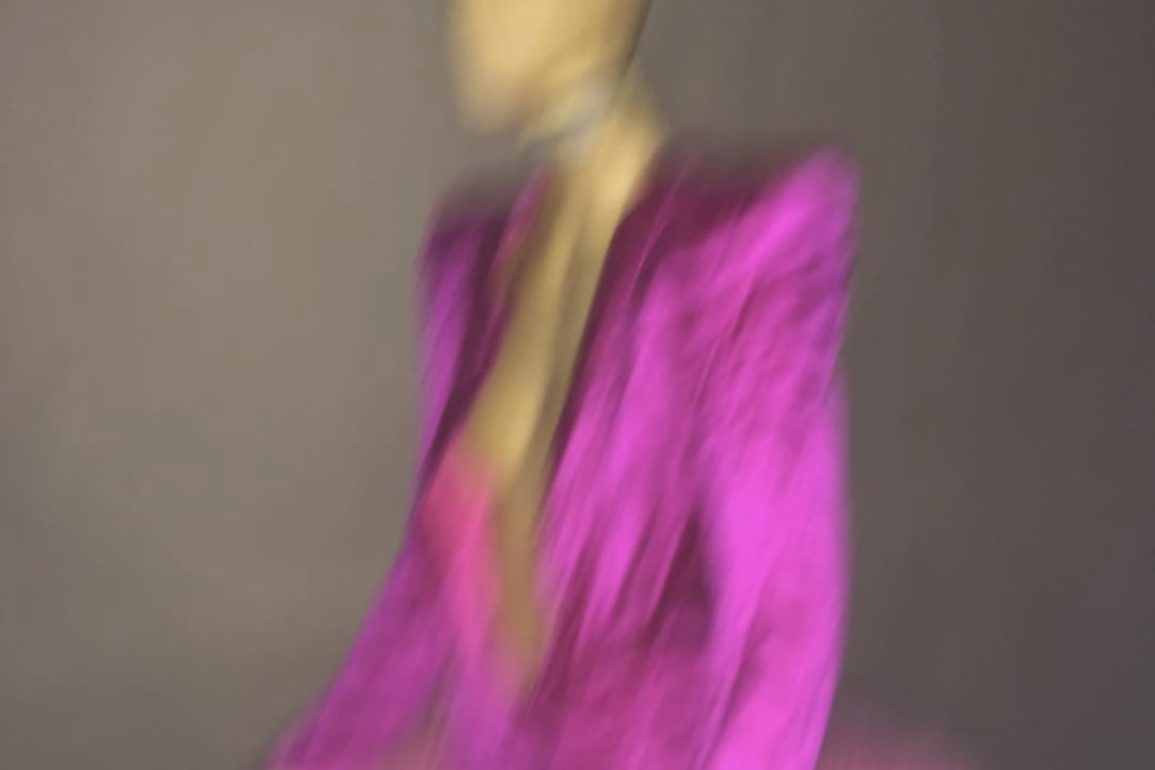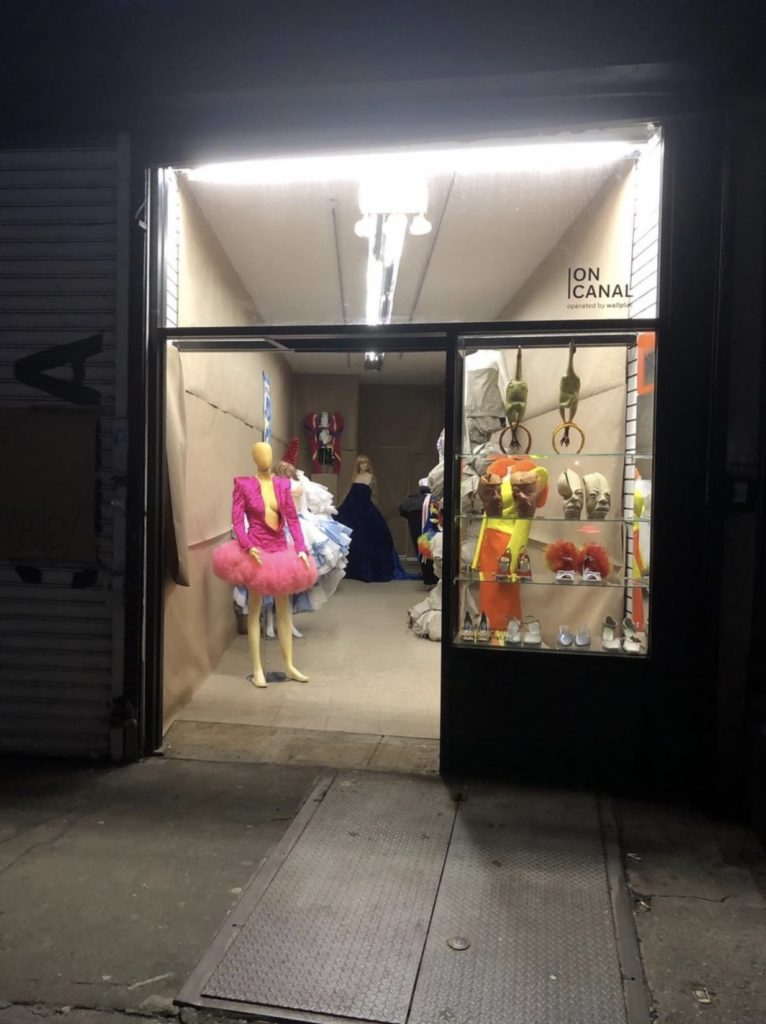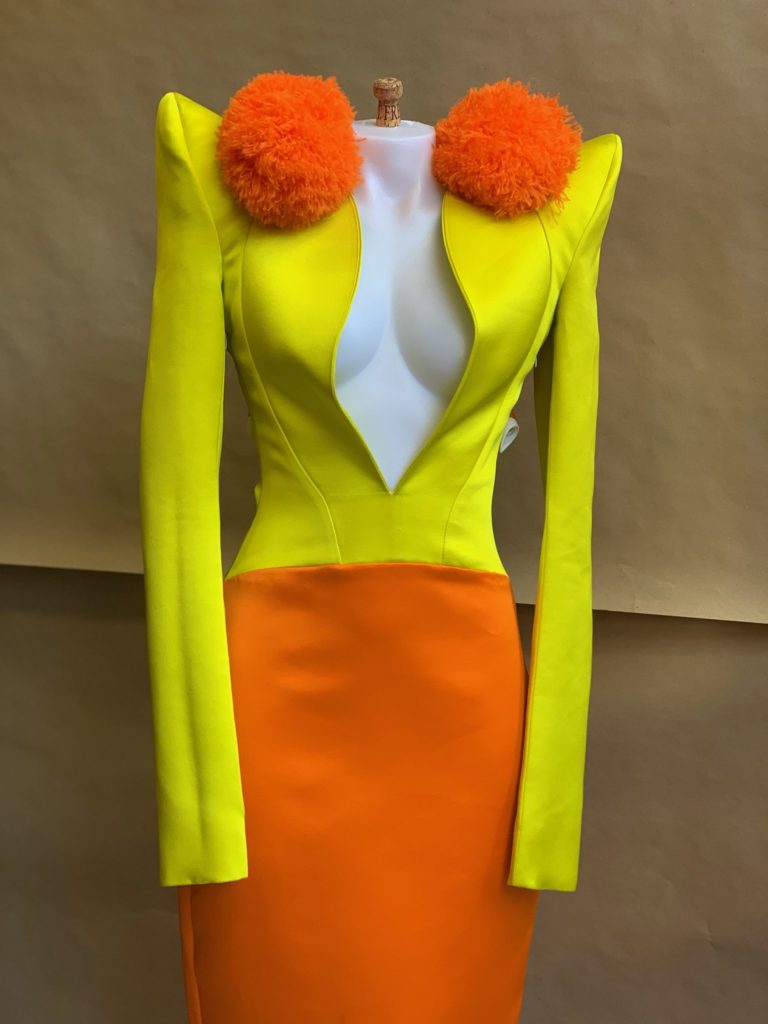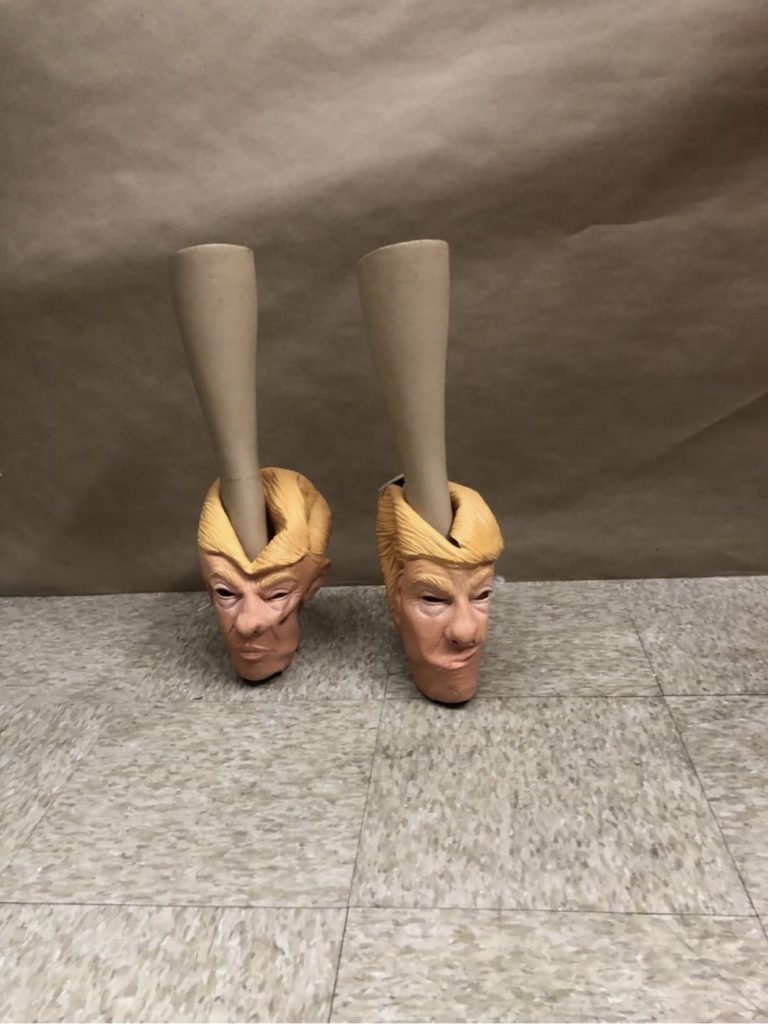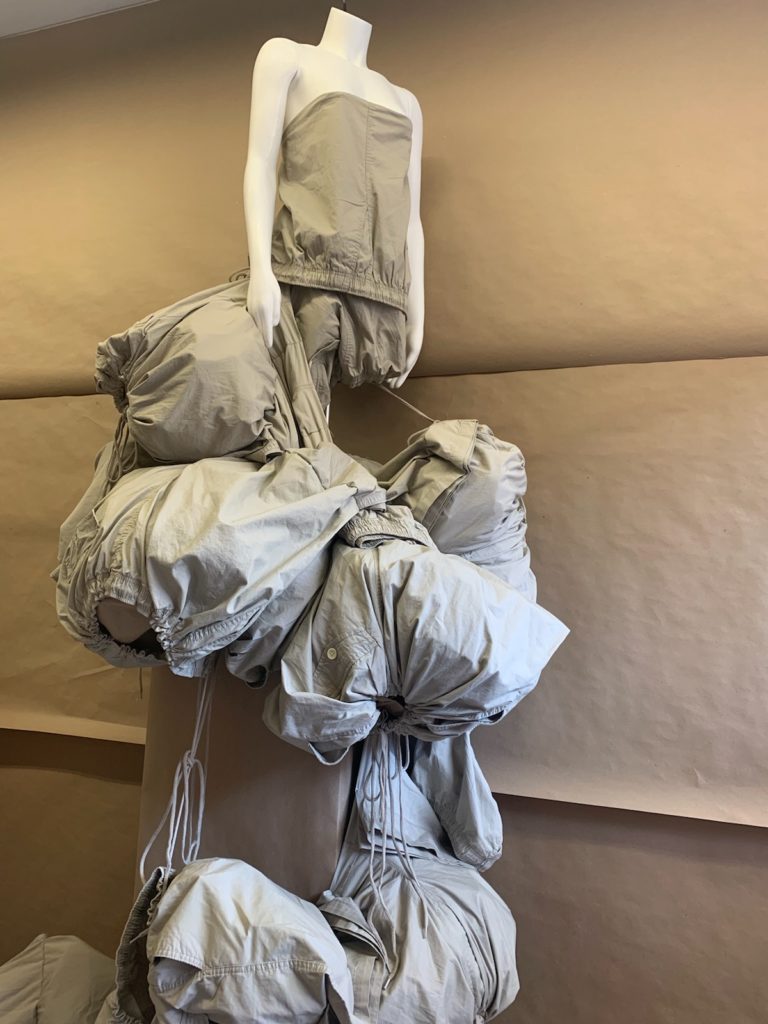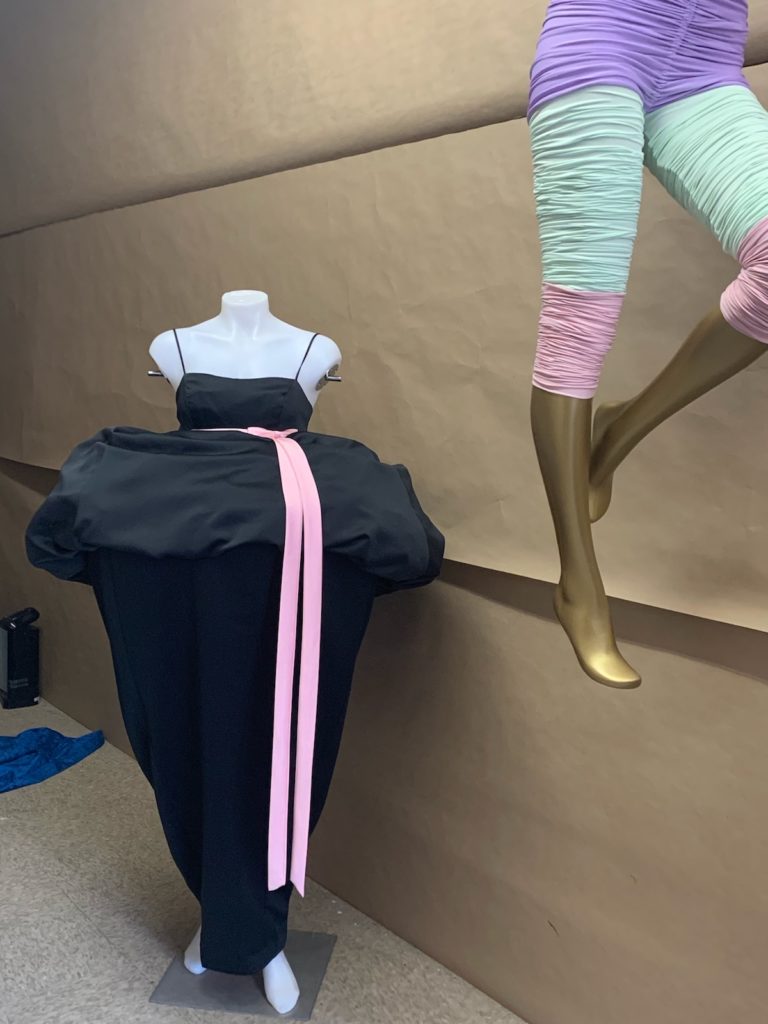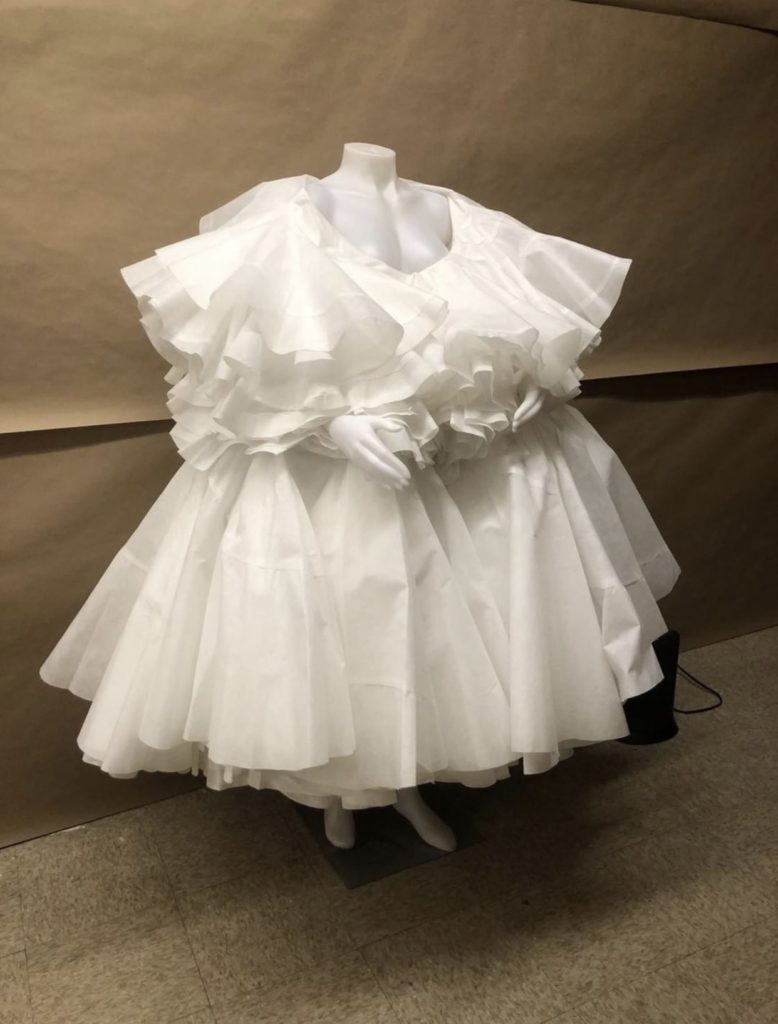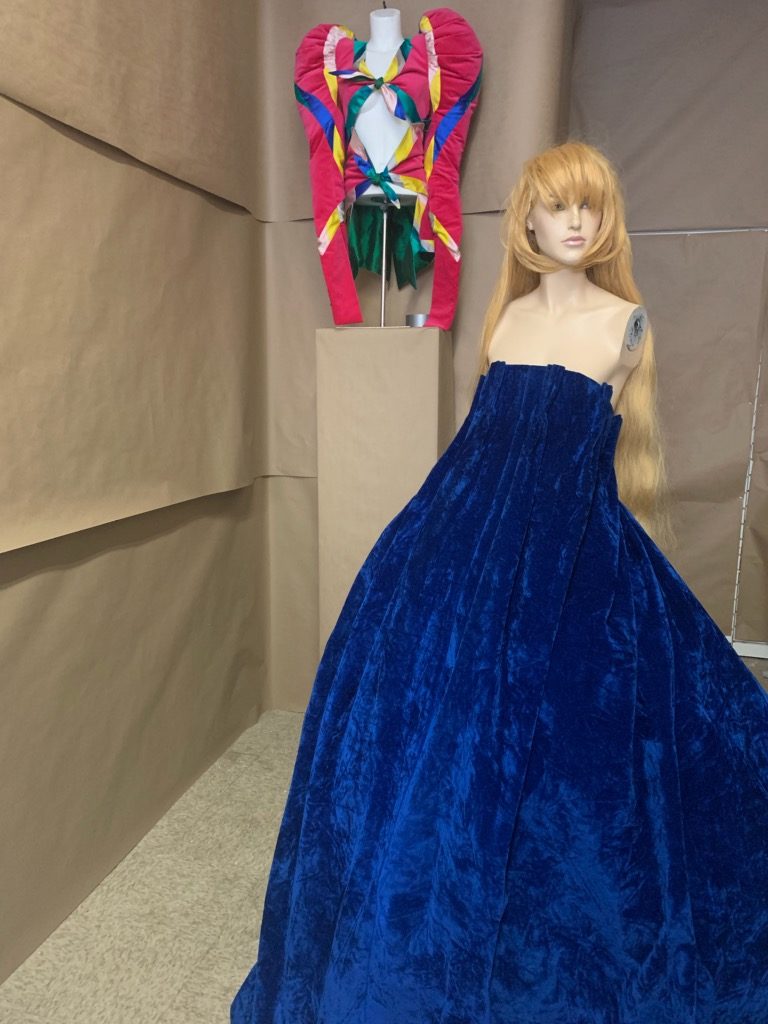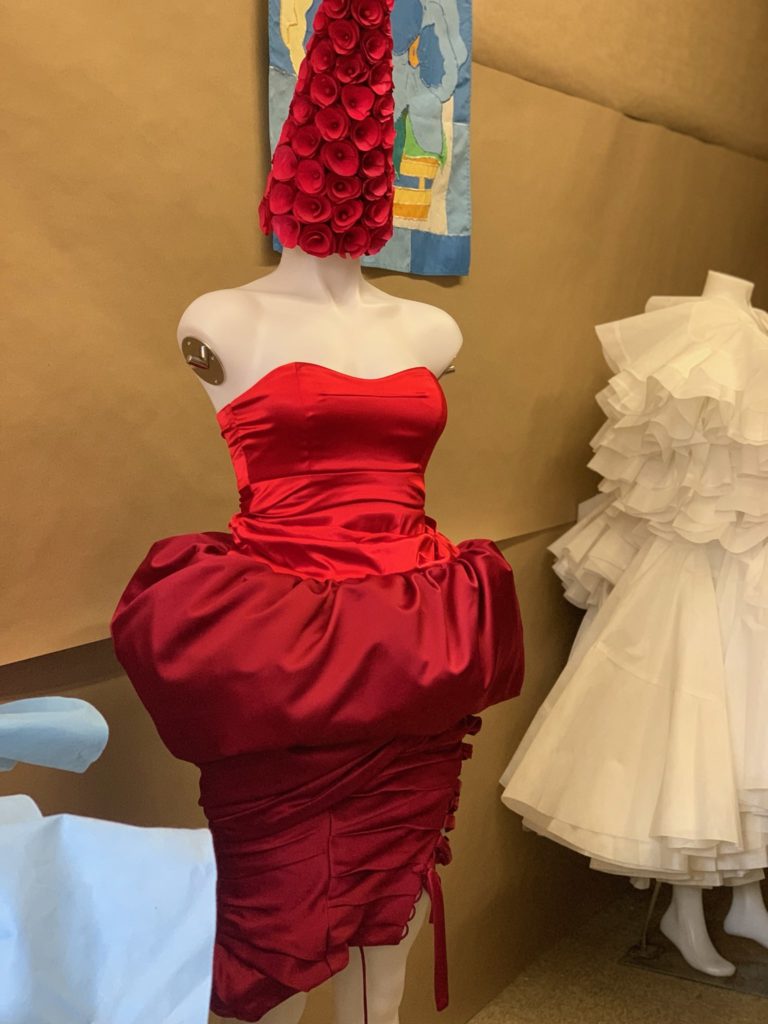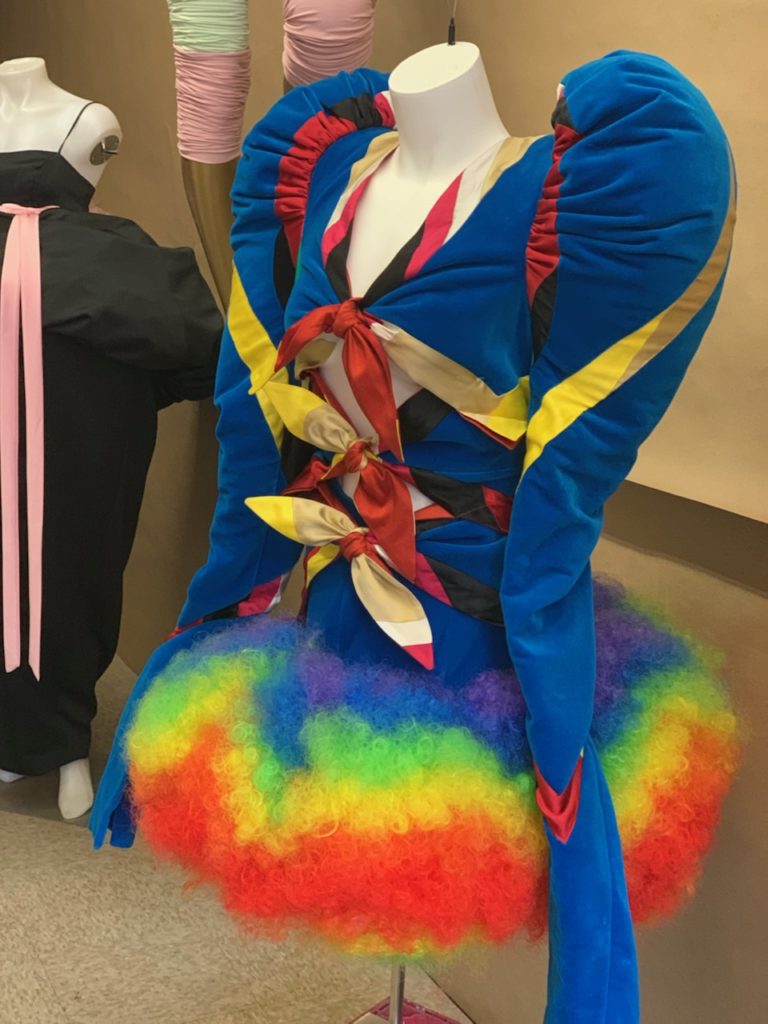For two weeks a year, New York Fashion Week is the most visible spectacle in town, from the private cars blocking Canal Street to the smartly dressed individuals on every corner. But not all sartorial influence happens in the public eye; nestled away in a done-up storage unit a few blocks away from all the action, is an emerging designer challenging the typical grandeur of fashion by adding a bit of idiosyncrasy and nonconformity to his creations. Edwin Mohney, a recent graduate from the Central Saint Martins Fashion Design MA program, takes a different approach to Fashion Week. In regard to his first exhibition following graduation and his avant-garde creations, Mohney said, “It [the exhibition] was more about putting this [the garments] out there, having a chat with people who stop by, and start the momentum of getting back into making collections after taking some time off.”
Mohney’s New York pop-up show has a unique window display, rivaling the city’s mainstream fashion attractions. In it, rubber chickens, face masks, and stilettos draped in clown-wig hair, are all seemingly an homage to Mohney’s graduation show, providing a preface to the anomalous designs waiting inside the exhibition. Mohney’s surrealist approach to the show is all-encompassing—from the eccentric window to the kraft papered walls to the thought-provoking creations.
For every fashion student leaving the safety net of school, there is an unspoken pressure to build a reputation and garner a foothold in the industry. Mohney, in the 11 garments showcased, breaks the mold of what is expected from a fashion designer all together. Among the pieces are a Basque gowned bottom comprised of diaper cloth, paired with a bodice made of medical-grade materials—like elastic bandages, and a jacket with mutton sleeves partnered with a rainbow clown-hair skirt. Both are proof of this visionary’s status as an up-and-coming designer to watch.
In the interview below, Mohney shares how his struggles helped mold his designs, develop his evolving inspirations, and bring a new outlook on fashion.
What inspired these eclectic creations?
“Basically, there is no distinct one inspiration. It’s more of like gathering materials and reacting to them. There’s a certain kitsch quality to it—so it’s all sort of bad taste or found objects and making due with what I have. So, there’s prom dresses that have been reworked, there’s curtains, diaper fabric, medical things. We have different clown wigs. It’s all been reworked and recontextualized. It’s sort of like design through recontextualization, if you will. And, then I abstract. I don’t want it to be too on the nose.
What was it like being an American student in the British environment?
It was really good because I had a different perspective, for sure. It was hard at first because the culture here is completely different about fashion. It was a bit of an adjustment when I first moved because I was like: It’s so open and free and creative. It was good because it was challenging. I had to unpack a lot of stuff while I was there. So now it’s exciting to be back. I’m kind of like a foreigner in my own country in a lot of ways, which I really enjoy.
What do you try to convey through your designs?
It’s pure emotion. It’s purely whatever I’m feeling. A lot of it comes from… I struggle with a few different mental health issues and I want transparency to erase a certain stigma around that [mental health issue]. Whenever I’m having a bad day, I work to deal with it so it’s always creating a happy place or creating an escape from that, so this is like an antidote to stress and anxiety and things like that. That’s always a starting point in conveying it [designs]. I’m into restyling and recontextualizing.
Is there a certain type of persona or a customer you design for?
They’re all different. I think special occasion for sure. It’s costume. It’s super unrealistic, but it’s all rooted in things that I’ve found. There’s a weird duality between something that you can be indifferent about because you’ve seen it a million times in a charity shop, and then you mix it with something that’s completely absurd and fanciful. I guess a woman who is that sort of person, who is an everyday person, but living somewhere else in their head—which is basically me.
Words by Jordan Stone, MA Fashion Journalism. Photos by Edwin Mohney and Jordan Stone.

